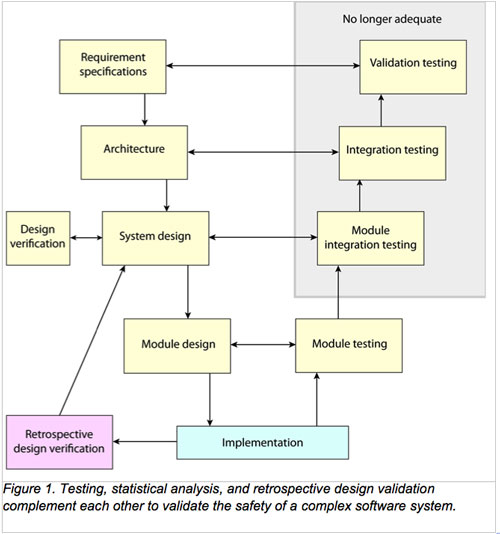When it comes to the state of interoperability in the medical device industry there couldn't be a better metaphor than Arrested Development*. A dysfunctional family made up of eccentric well-meaning personalities each doing their own thing, oblivious to each other and the rest of the world.
Healthcare Un-Interoperability has long been one of my favorite subjects. Let's review where things are these days.
The article Health IT Interoperability: How Far Along Are We? provides a nice summary of the current state of HIT interoperability. This is particularly important because:
hospitals using basic EHR systems tripled from 12.2 percent in 2009 to 44.4 percent in 2012
For better or worse, it's the monetary incentives of the Affordable Care Act that push doctors to electronic medical records and is the primary reason for the accelerated rate of EHR adoption. The goal of having more electronic health records is to improve the quality of patient care. Reduction of medication-related errors is a great example: Lack of Interoperability has Ownership for Medication Errors. The rapid uptake of these systems can also present problems. For example, in Emergency Departments: EHR systems pose serious concerns, report says.
Nevertheless, it's clear that electronic medical records is the future in healthcare data management. The down-side of this growth from an interoperability point of view is that there are that many more systems out there that don't talk to each other!
Initiatives like CommonWell and Healtheway are moving in the right direction but are just getting off the ground. Also, these types of efforts are often far removed from the medical device industry and have little impact on software development and interface decision making.
Let's step back and look at the HIMSS definition of Interoperability:
- Foundational: Data exchange with no interpretation.
- Structural: Allows identification of data structure (fields) but not necessarily data content.
- Semantic: Data structuring and codification (interpretation) of the data.
For all practical purposes only #3 (semantic) has value when in comes to the exchange of data with a medical device. As noted in Interoperability: Not a non-issue:
Semantic interoperability continues to be a major challenge and, if not addressed, will have a serious impact on the quality of care.
The same point is made here: Interoperability vs Health Information Exchange: Setting the Record Straight. Just because you can send it (exchange) doesn't mean the recipient can understand it (interoperability).
One area that is always part of this discussion are standards. It's unfortunate that due to technical and (mostly) non-technical reasons the following is often true:
Even more disheartening is when you read that a standards-based organization (OpenStack in this case) can't necessarily make interoperability magically happen:
... success depends upon a single large vendor assuming leadership. Interoperability will follow, but it won't be designed by committee.
The distress of a well-focused cloud computing API involving a hand-full of vendors makes the outlook for HIT interoperability look particularly bleak. To make matters worse, the use of OSS in FDA regulated products face additional challenges that are not even seen in most other industries (see Open Source Medical Device Connectivity).
This is all good news for businesses that provide products and services that fill the connectivity gap. Companies like Capsule, iSirona, and Nuvon are many times the only effective way to provide an integration solution to a large number of customers.
I should note that there are some bright spots in the interoperability landscape. For example, the Continua Health Alliance has successfully pulled together over 200 companies to create a vision for inter-operable personal connected health solutions. Also, the West Health Institute is building standardized communication protocols into their embedded software for medical devices. These and numerous other successes provide hope, but are still just the tip of a very large iceberg.
Dr. Julian Goldman sums up the current situation in Medical Device Interoperability: A ‘Wicked Problem’ of Our Time:
Our years of work on medical device interoperability have led us to see the barriers (including technical, business, liability, standards, and regulatory factors) as “wicked problems,” in which there is little agreement about “the problem,” no agreement on a solution, and problem solving is complex because of external constraints.
Others (Is HIT interoperability in the nature of healthcare?) see the proprietary business model of major HIT companies as the primary culprit.
So what are some possible scenarios for the future?
- Same old, same old. This is essentially Einstein's definition of insanity: doing the same thing over and over again and expecting different results.
- Federally enforced standards and regulations. Dr. Goldman's suggestion to require manufacturers to fully disclosure their communication interfaces? Given the current anti-regulatory environment and budget restrictions, this seems unlikely to happen.
- A hegemon, like OpenStack above? The healthcare industry is too diverse and complex. There is no single player that could even begin to tip the scales.
At least for the foreseeable future it looks like #1 (insanity) is going to prevail. If I'm missing some huge game-changer, please let me know.
In the mean time, let another episode begin!
*No deep meaning here. Certainly not like Arrested Criticism. I'm just comparing the medical device industry to a bunch of fictional crazy people.


 The FDA has announced the
The FDA has announced the 


